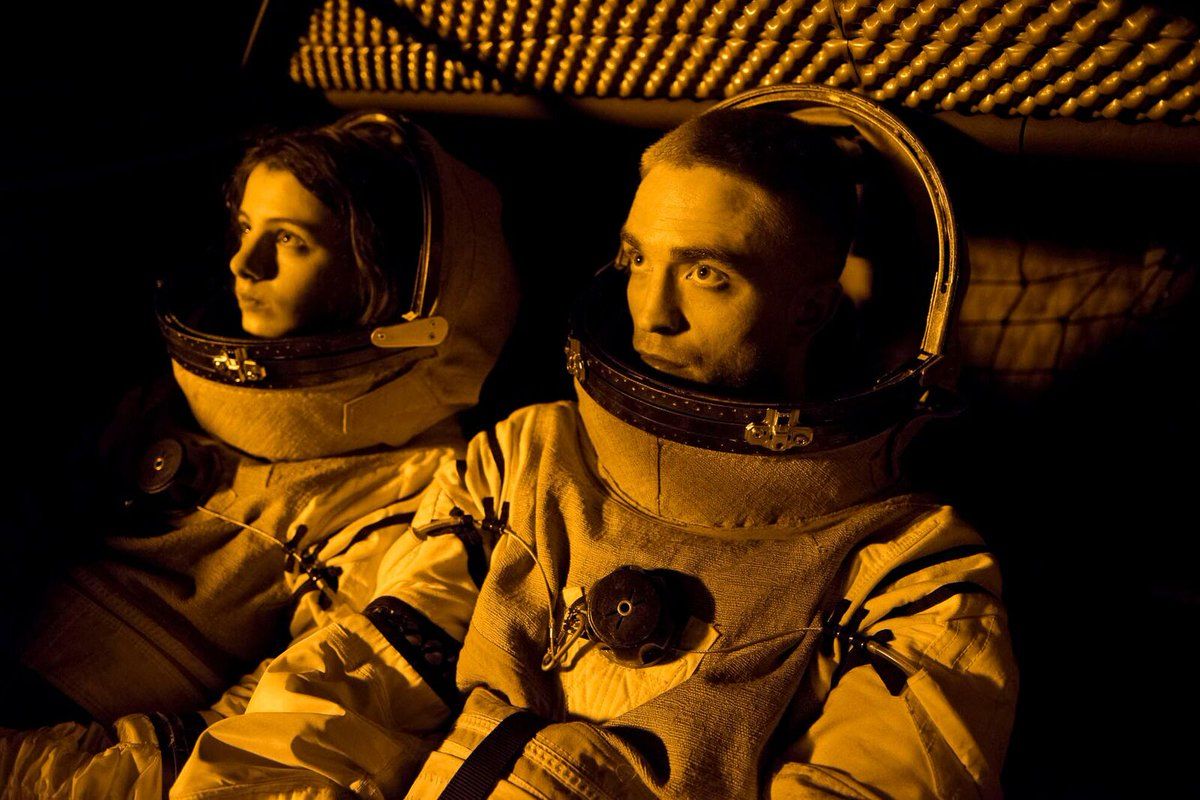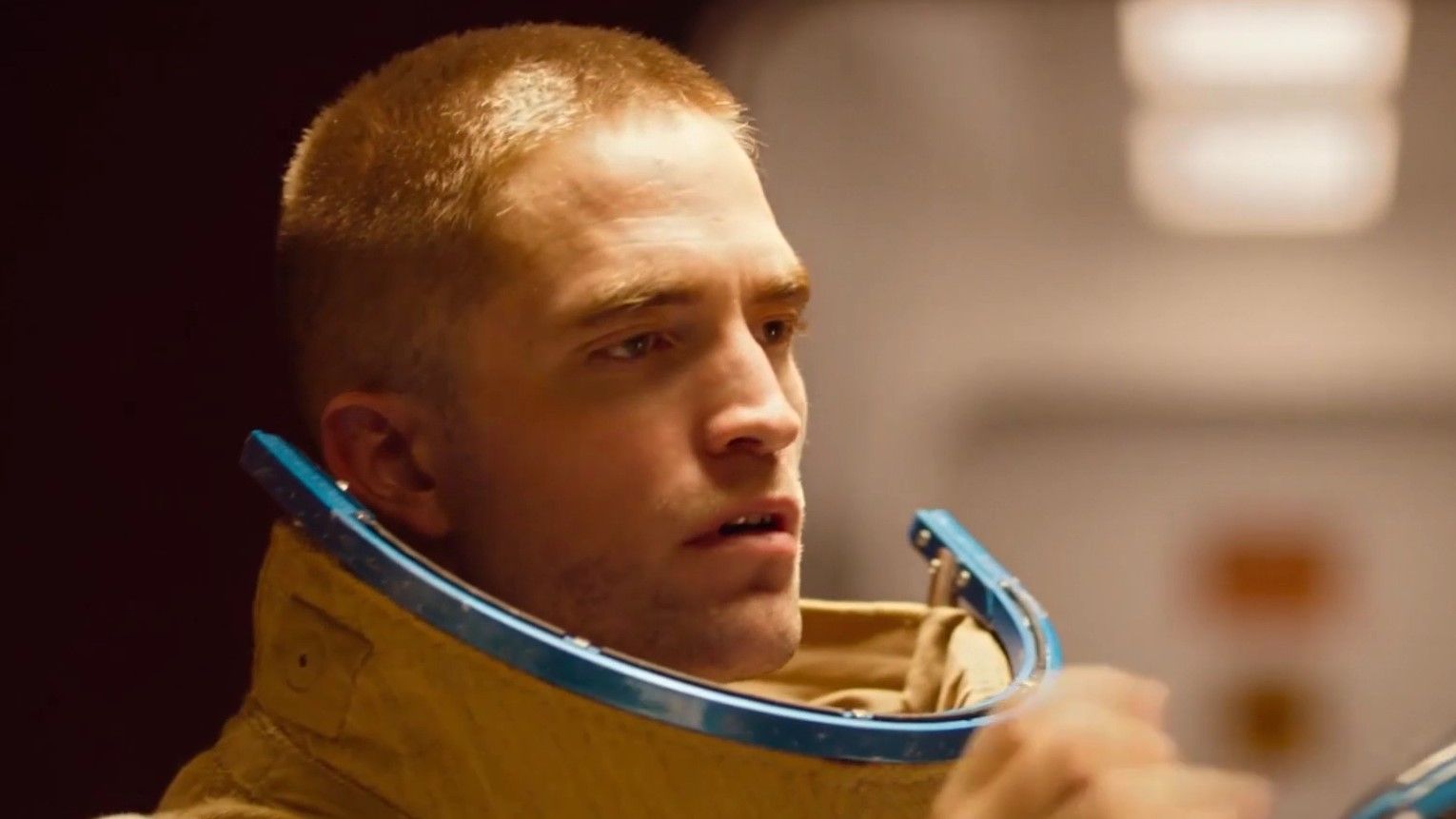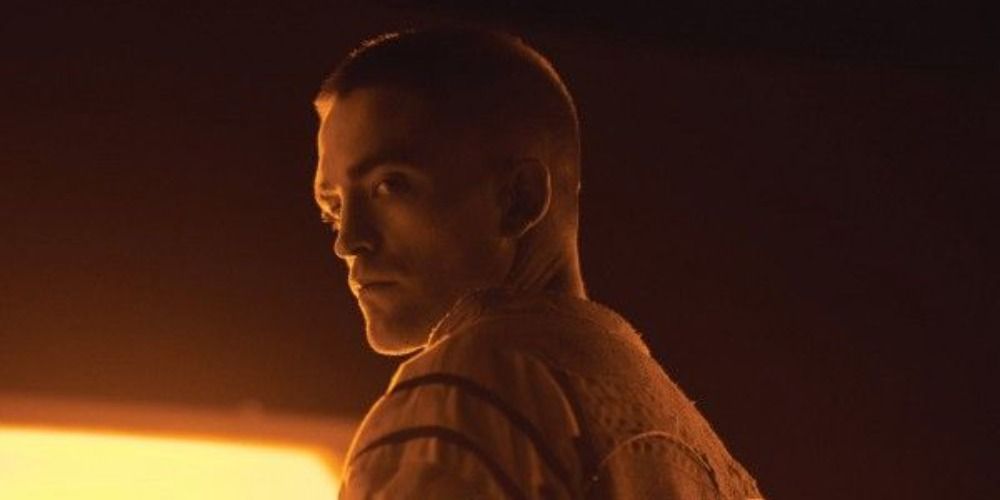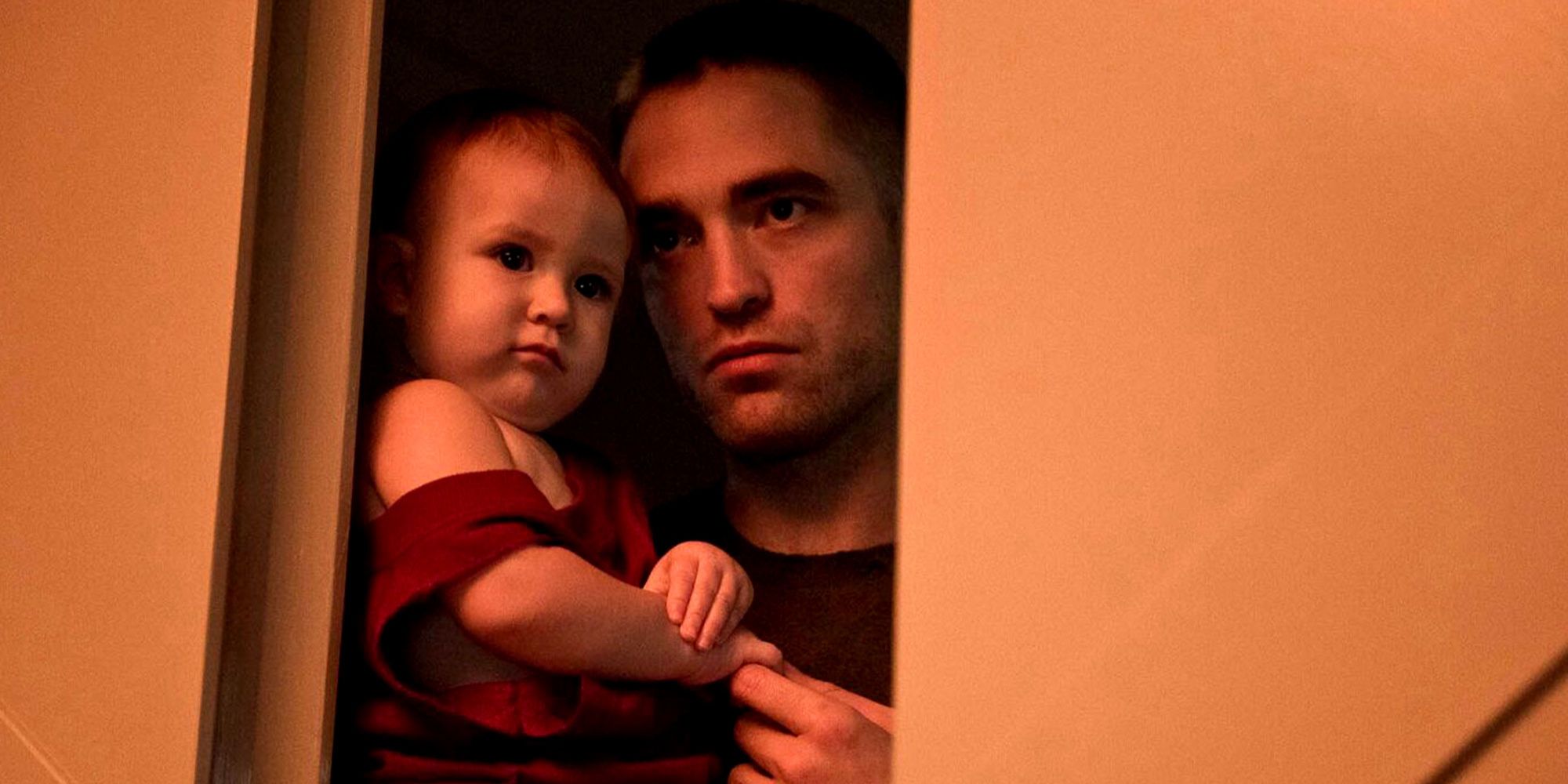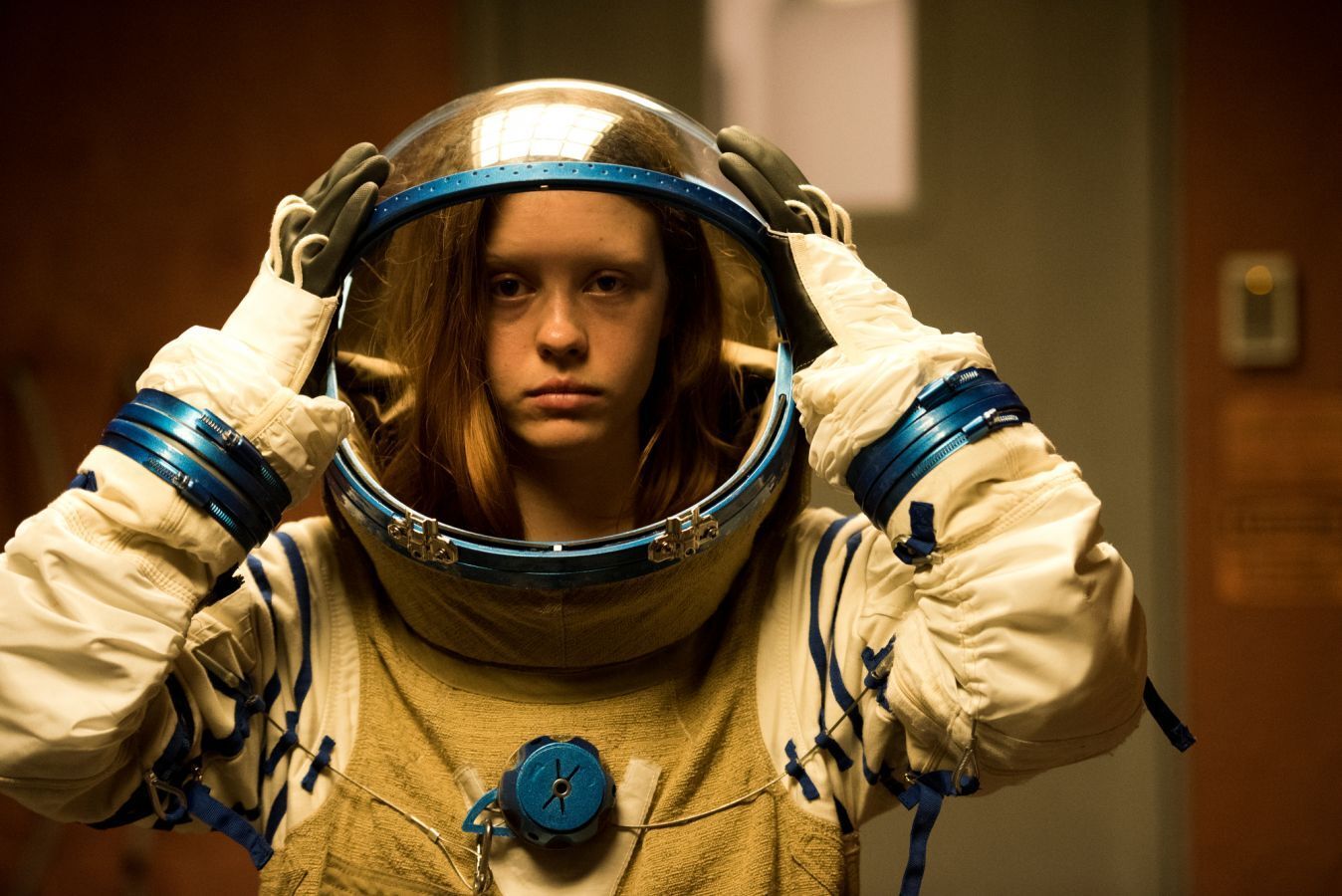In the final moments of Claire Denis’s introspective sci-fi drama High Life, Robert Pattinson’s criminal-turned-astronaut-turned-dad Monte and his teenage daughter, Willow (Jessie Ross), come across a spaceship identical to the one they are in. The only difference is the number on the ship’s carcass, which indicates that it left Earth after Monte’s mission. Adrift for many years — decades, even — Monte decides to board the ship in the hopes of finding someone to guide them home or any other kind of assistance. From their own ship, young Willow watches through a screen as her father climbs on deck to find not a human crew, but a pack of semi-feral dogs, some of which seem to be long dead. It’s a shocking, heartbreaking scene that echoes Monte’s own backstory. It also fits like a glove in this dismaying tale that asks hard questions about what makes us human, and how much of our humanity actually remains in the face of progress and extreme adversity
Originally released in 2018, High Life is Denis's first English-speaking film. Written by Denis and her long-time collaborator Jean-Pol Fargeau, the film follows a father and daughter duo struggling to survive in a derelict spaceship, identified only by the number 7. Or it tells the story of a group of prisoners turned into astronauts through a strange sentence commuting program. Both synopses are equally true, and the one you choose depends exclusively on how much of the plot you are willing to share. Despite having a pretty straightforward plot, including a scene in which a professor (Victor Banerjee) explains what is going on to an audience surrogate, High Life can also be a hermetic film at times. Some viewers were particularly puzzled by the ending, from the dogs sequence to the very last scene of Monte and Willow talking to each other after flying into a black hole.
High Life begins with Monte running around the spaceship, performing various maintenance tasks by himself while trying to take care of Willow (played as a baby by Scarlett Lindsey). From his voice-over as well as pieces of his one-way conversations with the child, we begin to understand the precariousness of their situation. Despite still receiving televised images from Earth, they have lost all contact with their home planet. Some visual clues also help us paint a bigger picture: the bodies kept in cryogenic state indicate that Monte and Willow were part of a larger crew; the disposal of the bodies into outer space tell us that the ship’s systems are failing and can’t sustain life for long. Monte’s decision to dress them up in spacesuits before throwing them out shows that he cares for them and hopes against all hope that they may still survive. These scenes are intertwined with shots of two children and a dog playing in an earthly forest. They seem to be memories of Monte’s previous life, but it’s hard to tell for sure.
Until, of course, the aforementioned professor reveals to us the nature of Monte’s mission, and the film cuts to the past, to a time before Willow was born. One of the kids playing in the flashbacks was indeed Monte, who killed his friend with a rock for considering her responsible for the death of his dog. He’s been imprisoned since childhood and, alongside other convicted criminals, has agreed to participate in an expedition to try and harvest energy from a nearby black hole. It’s a suicide mission, but they don’t know that. Likewise, they are unaware that power harvesting isn’t the research’s main concern, even if it might be an advantageous outcome. The real goal, the film tells us verbally, is to assess how great levels of radiation impact the human body. However, the fact that the ship was meant to lose connection to ground control from the get-go suggests that the mission’s purpose is simply to rid Earth of undesirables.
Nonetheless, Monte, Tcherny (André 3000), Boyse (Mia Goth), and the other crew members follow their directives regularly. Most of them also comply with the research conducted by the de facto captain of the ship, a doctor named Dibs (Juliette Binoche). Convicted for the murder of her husband and their two children, Dibs inseminates the women of the ship with the men’s semen in order to produce a baby that will be able to endure the black hole’s high radiation levels. Only two people refuse to participate in her project: Boyse, who douches to eliminate the sperm injected by Dibs, and Monte, who adopts a monastic lifestyle.
Despite being an extremely sexually charged movie, High Life has no sex scenes. It is implied that the ship’s crew is forbidden from having sex with each other, even for procreation. The only intimate contact they have with one another is through violence. To satiate their sexual desire, they have access to an intricate masturbation device dubbed “the fuckbox.” In this scenario, Dibs uses sex as a way of exerting power over them, mainly by breeding them like livestock instead of allowing them to reproduce naturally. However, Denis also shows her as a “tease,” seducing members of the crew and subsequently denying them sex. Using the drugs to which she has access to, Dibs also rapes Monte while he is asleep to collect his sperm and injects it into an unconscious Boyse. From this non-consensual union, Willow is born.
The birth of Willow is both preceded and followed by the “death” of most of the ship’s crew. The quotation marks, here, are used because, due to the cryogenic process, it is unclear whether those that died aboard the ship actually passed or were merely put on stasis until they could be healed of their injuries or diseases. Still, two extremely important deaths do take place before Monte is left alone with Willow. The first one to go is Boyse, who hijacks one of the ship’s pods and flies it into the black hole, dying of an exploded head. The second is Dibs, who locks herself out of the ship after being severely injured.
Being able to make choices, to have control over our bodies and what is done to them, is an essential part of being human. Whenever our autonomy is put into question, whether by imprisonment or the restriction of reproductive rights, it’s as if our own status as humans is put into question. Thus, both Monte’s monastic abstinence and Boyse’s obsessive douching are ways of showing agency and control over themselves. Likewise, the two suicides are desperate attempts at exerting autonomy in a situation in which you have no say over any other aspect of your life.
This is one of the reasons why the discovery of the dog ship is so impactful to Monte. Upon coming aboard, he realizes that they had as much choice in accepting that mission as those dogs: like the animals, they didn’t know what they were doing and were left to fend for themselves. Furthermore, the number 9 on the dog ship’s carcass indicates that it left Earth after Monte’s crew; that is, after Victor Banerjee’s professor made his speech about the inhumanity of sending prisoners to die in space. Much like Monte when he killed his childhood friend, the researchers responsible for the mission put the lives of animals over human lives — namely, the lives of incarcerated humans.
However, these are not the only issues brought forth by the discovery of the dog ship. While the population of ship number 7 dwindled, the pack of feral dogs continued to reproduce. There are puppies among them, possibly feeding on the corpses of those that died. Unlike humans, dogs have no concept of cannibalism or incest. They don’t understand the notion of taboo, which Monte tries to impart to his infant daughter in the first few minutes of the movie through the example of eating feces and drinking urine.
Monte knows that, in order to keep life going in the spaceship — to make human life abound just like the vegetation from the ever-growing garden — he would have to violate one of humanity’s most essential taboos. And, unlike his decision to join the black hole mission, this is a choice he would have to make knowingly. Before disappearing into the darkness, Dibs informs Monte of Willow’s parentage, making sure that he will never be able to claim ignorance. This is why, when recording his journal entry after disposing of the cryogenically frozen bodies, Monte states that he is well aware of the implications. It is also why the shot of Willow having her first period is so important, and why Monte is so hopeful when they find ship number 9. He’s not only looking for help and supplies, but for a community in which he and Willow can assure the continuation of human life without committing incest. He’s looking for a way to remain human, adhering to the rituals and laws that guide human society. Instead, all he finds is the reaffirmation that, at least in that corner of space, he is the same as an animal.
In the very final scene of High Life, Monte and Willow fly another one of the ship’s pods into the black hole, dressed in their space suits. Then, the image fades to black, and we see a brief exchange of words between Monte and Willow in which he asks her if she is ready, and she agrees. Credits roll as a song by Tindersticks featuring vocals by Robert Pattinson himself plays, with very suggestive lyrics: "Willow, are we rushing forward, are we standing still? (...) Willow, do you feel the sun upon your back? A lover's hand. Breath. An abyss." It’s a dubious ending that, much like the song that accompanies it, can be interpreted both literally and figuratively. One way of seeing it is that Monte and Willow followed the same path as Boyse, killing themselves to retain what makes them human — in their case, the taboo of incest instead of autonomy. However, it is also possible to construe the flight into the black hole as an acceptance of their fate, of the fact that, to keep life going, they will have to give in. It’s a jump into the unthinkable, and there’s no knowing what lies on the other side.

